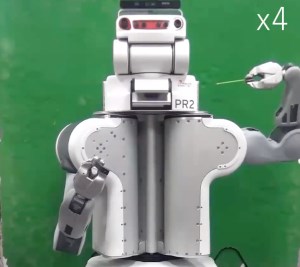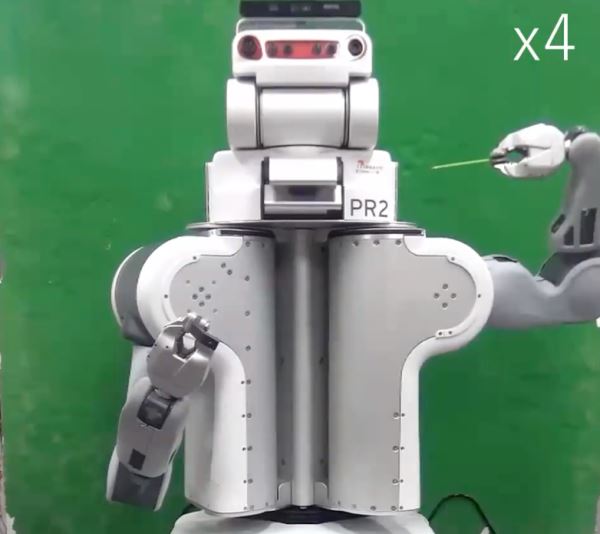Researchers at the University of Tokyo have taught a PR2 robot to self-repair by tightening its own screws, as well as augmenting itself to add accessories, such as hooks, to carry more items.
Humanoid robots are expected to work continuously in the home environment or disaster sites.
“However, the hardware of the robot sometimes breaks, and needs to be repaired. So, it is essential for humanoid robots to obtain self-repair methods,” say researchers Takayuki Murooka, Kei Okada, and Masayuki Inaba in their latest paper.
They want humanoid robots of the future to learn to repair themselves and believe the tightening system and outlined methods will help humanoid robots.
Self-reparation
To self-repair, the robot requires a precise calculation of the screw pose and the ability to rotate around the screw itself.
The researchers used the robot’s own CAD data to enable it to easily locate screws. This is more precise than vision-based calculations, point out the researchers.
To work the harder to reach screws in awkward places, or ones that require an Allen wrench, the robot was taught to regrasp the tool.
The robot executes self-repair as a daily check, but it can also perceive a loose screw indicated by a human. When pointed out by the human, PR2 perceives the loose screw and calculates its precise position using its CAD data. Then it tightens the screw with a proper driver.
“When the robot tightens screws of self-body, the robot memorizes it. By keeping storing the information, the robot knows which screws tend to loosen and which not,” say the researchers.
Self-augmentation
Not only can the robot repair itself, it also can self-augment and add hardware to itself.
The researchers taught the robot to attach an additional hook to itself in order to be able to carry more things when its two hands are not enough.
“So, we let PR2 to use a bag the same as we put it on our shoulder,” explain the researchers. “PR2 started attaching the hook whose pose is calculated with self-CAD data with a driver on his shoulder in order to put a bag on his shoulder.
“PR2 finished attaching the hook, and the people put a lot of cans in a tote bag and put it on PR2’s shoulder.”
The self-repairing PR2 robot was presented at the 2019 International Conference on Humanoid Robots 2019 in Toronto, Canada.
INSERT VIDEO:
[https://www.youtube.com/watch?v=_yKnIhl_Mpo&feature=youtu.be]
Having robots that can fix themselves means that they require less maintenance and last longer, as well as being safer to work around humans.
Self-repairing robots is the beginning of a future where robots can self-heal. The European Commission is to fund a €3 million (A$4.8 million) self-healing soft robot (SHERO) project, which will create a robot made from flexible plastics that can detect damage and temporarily heal itself without human interaction.
The University of Brussels will lead the project.
“Over the past few years, we have already taken the first steps in creating self-healing materials for robots,” says Professor Bram Vanderborght from the University of Brussels.
“With this research we want to continue and, above all, ensure that robots that are used in our working environment are safer, but also more sustainable. Due to the self-repair mechanism of this new kind of robot, complex, costly repairs may be a thing of the past,” explains Professor Vanderborght.
The research consortium also includes the Department of Engineering at University of Cambridge, École Supérieure de Physique et de Chimie Industrielles de la ville de Paris (ESPCI), Swiss Federal Laboratories for Materials Science and Technology (Empa), and the Dutch Polymer manufacturer SupraPolix.
As part of the project, the Department of Engineering at Cambridge University, England is looking at integrating self-healing materials into soft robotic arms.
The findings of the project will have a widespread impact on robotics worldwide.
Self-healing materials could have future applications in modular robotics, educational robotics and evolutionary robotics where a single robot can be 'recycled' to generate a fresh prototype, says Dr Thomas George Thuruthel from Department of Engineering at Cambridge University.


